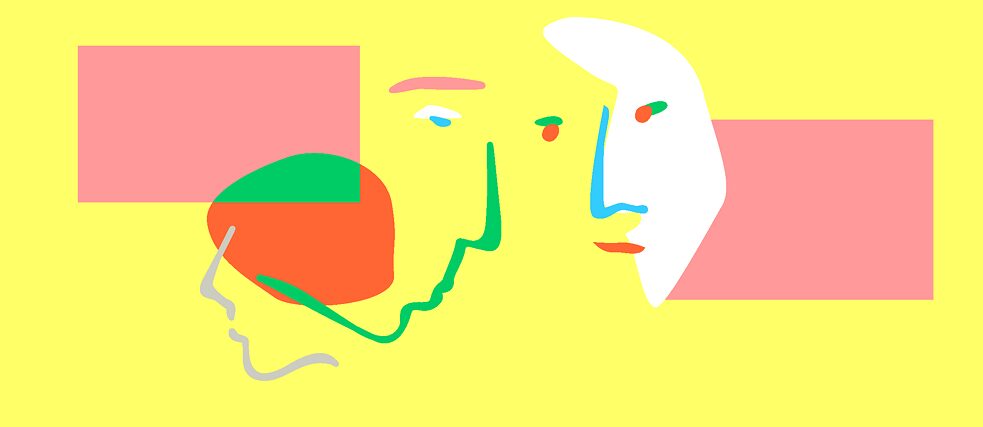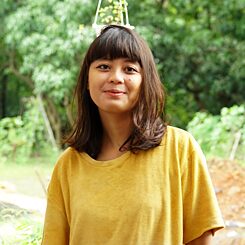Arthouse Cinema - Werner Herzog
Surrendering to Truth: leaving the realistic and representational

For Herzog, images based on everyday reality and are simply shown in this way—or let’s say innocent images—present only superficial truths. Cinema is a medium for achieving the ultimate truth, what Herzog called ecstatic truth. This is truth that can only be captured by something sublime, poetic and mysterious.
Immediately after watching Werner Herzog’s 1977 film Stroszek, I saw in my head possible images of the two main locations that make up the narrative of the film. And then I realized that Stroszek is one of the Herzog films I have seen that is firmly rooted in reality. Herzog, of course, doesn’t like the words “reality” or “fact”. One only has to look at how he condemned the movement Cinéma Vérité in the Minnesota Declaration (1999), since it deviated from the idea that cameras play a role in recording sensory realities and portraying their truth in cinema.
The factual is not enough
The reality in Stroszek mentioned above does not correspond to Herzog’s understanding of Cinéma Vérité. “Possible images” refers to the reality in the image and at the same time emphasizes its fictitious nature. Reality is the result of Herzog’s abstraction and includes the logic of constructing a certain space and inherent or objective values such as memory, history and culture. Through these “possible images”, Herzog proves how what he called superficial truths work within the logical structure of images (whether in fiction or in documentary film production) that want to be consistent with the factual.Stroszek clearly shows that facts are not enough to tell the truth. Herzog’s goal is then to create images that allow the viewer to access hidden truths through images that do not exist or are inconsistent with the images we perceive in our daily lives. This review tries to understand how the “possible images” (superficially) in Stroszek are transformed into luminous images to help us reach the ultimate truth.
No details for Stroszek detention were given, though a prison official advised Stroszek not to drink alcohol anymore. As soon as he leaves prison, he goes to a bar and orders a beer. There he runs into Eva, a prostitute who is hit by her pimp. Out of a desire to start a better life, Stroszek and Eva agree to live together in Stroszek’s apartment, which had been taken care of by Stroszek’s elderly neighbor Herr Scheitz. Eva’s pimp continues to harass her, however, and uses violence against her. Stroszek is also a victim of mobbing and is unable to defend himself physically. Life is hard. At the same time, Herr Scheitz’s cousin invites him to move to America, and it’s not long before the three of them decide to leave their grim life in Germany.
Pursuing the American dream: prosperity for all
America is the logical place for the idea of a prosperous life. Emerging as the victor of the Second World War, America did not experience widespread destruction as did European countries. With its strong economy, America’s “screen culture” achieved a hegemony of cultural expansion throughout the world. WWII destroyed Germany and was an easy target. Against this cultural and historical backdrop, America also had logical consequences for the construction of Herzog’s image.In contrast to the sad colors, the overcrowded rooms, the scenes usually filmed indoors (leading to movement restrictions) and the classical music accompaniment in the German sequences, the scenes in America are dominated by landscapes, pale shades, country music and outdoor shots. There is, however, another coherence between America and the construction of scenes, referring back to “possible images”: the appearance of weapons (and police), for example, and there is the outing that reveals the mystery of the murder of one of the farmers in Plainfield (a region actually known for a series of mysterious murders). In the end, the German Stroszek, an innocent young man who looks so clumsy he cannot defend himself (and whose crime is drunkenness?), is transformed into an American version of Stroszek who carries out a robbery with a firearm.
Imagining “another truth”
These scenes in America constitute “possible images” and fictions that correspond to the predominant American film culture and whose codes are very familiar to most of us. At one point we can even say that the images in America have a factual reference. We see the same in the images of Germany. However, the structure Herzog presents of the comparison between Germany and America is not carried out in the name of realism itself. He shows how his cinematic formulation functions. Cinema, which for Herzog has transformative power, requires a reality in its transformation process or a fact to be able to produce ecstatic images. Ecstatic images can be understood as images that are suddenly cut off from the factual, that communicate new experiences, the mysterious, the poetic and thereby open the way to the ultimate or poetic truth for the viewer.This also applies to accessing the truth of the film Stroszek, which is so easy for us to follow because it echoes the sad story of lower-class immigrants often taken up by the media. But then the film ends with a rather stunning final sequence in America. Stroszek and Scheitz decide to go shopping in the store directly across the street from the barbershop they just robbed instead of running away to escape capture. This action is a curiosity for the established hierarchical narrative structures that determine the role certain social classes should play. Following this sequence are animals that play music by performing repetitive movements and lead to Stroszek committing suicide on a moving cable railway, a ski lift which repeatedly circulates.
We experience the transformed images as images that say nothing, and thus they are both mysterious and poetic. This happens because they are not consistent with our expectations about how a story should end, nor do they correspond to our daily experiences. These empty or ecstatic images become an experience, an entirely new story about immigrants—it engages us in a game to generate different meaning. This is made possible by multiplying the kind of discourse beyond the old representational model and understanding the film by imagining other truths outside the normative truths of everyday life, which are constructions of the dominant social order.
author
 © Bunga Siagian
Bunga Siagian studied at the Driyarkara School of Philosophy (STF). She was one of the curators of the Arkipel — Jakarta International Documentary & Experimental Film Festival between 2013 and 2016. She occasionally writes about moving images. Bunga’s interest is currently focused on the practice of curating moving images within frames and how knowledge is displayed in public spaces. In 2017, Bunga and Ismal Muntaha founded the Land Studies Agency (BKP), a temporary institution whose aim is to experiment with the role, methods and forms of art in specific issues related to land.
© Bunga Siagian
Bunga Siagian studied at the Driyarkara School of Philosophy (STF). She was one of the curators of the Arkipel — Jakarta International Documentary & Experimental Film Festival between 2013 and 2016. She occasionally writes about moving images. Bunga’s interest is currently focused on the practice of curating moving images within frames and how knowledge is displayed in public spaces. In 2017, Bunga and Ismal Muntaha founded the Land Studies Agency (BKP), a temporary institution whose aim is to experiment with the role, methods and forms of art in specific issues related to land.